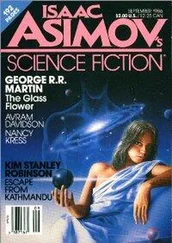He puts his ear to the wall across from Jeff. “Oh yeah. There’s some kind of noise from the other side of the wall.”
“Told you. A watery noise, right? Like toilets flushing, or someone showering?”
“Or a river running.”
“What?”
“Listen to it. Like a river? Right?”
“I don’t know. I don’t know what a river sounds like, I mean, when you’re in it or whatever.”
The two men eye each other.
“So we’re…”
“I don’t know.”
“What the fuck does that mean?”
“I don’t know.”
Corporation, n. An ingenious device for obtaining individual profit without individual responsibility.
Money, n. A blessing that is of no advantage to us excepting when we part with it.
—Ambrose Bierce,
The Devil’s Dictionary
The privatization of governmentality. The latter no longer handled solely by the state but rather by a body of non-state institutions (independent central banks, markets, rating agencies, pension funds, supranational institutions, etc.), of which state administrations, although not unimportant, are but one institution among others.
supposed Maurizio Lazzarato
Metropolitan Life Insurance Company bought the land at the southeast corner of Madison Square in the 1890s and built their headquarters there. Around the turn of the century the architect Napoleon LeBrun was hired to add a tower to this new building, which he decided to design based on the look of the campanile in the Piazza San Marco in Venice. The tower was completed in 1909 and at that point it was the tallest building on Earth, having overtopped the Flatiron Building on the southwest corner of Madison Square. The Woolworth Building opened in 1913 and took the height crown away, and after that the Met Life tower became famous mostly for its four big clocks, telling the time to the four cardinal directions. The clock faces were so big their minute hands weighed half a ton each.
In the 1920s, Met Life bought the church to the north of the tower, knocked it down, and built their North building. It was intended to be a skyscraper 100 stories tall, well taller than the Empire State Building, which was also being planned at that time, but when the Great Depression struck the Met Life people canceled their plan and capped North at thirty-two stories. You can still see that it’s the base for something much bigger, it looks like a gigantic pedestal missing its statue. And it has thirty elevators inside it, all ready to take people up to those sixty-eight missing floors. Maybe once people get over the freak-out of the floods they’ll tack on the upper spire in graphenated composites, maybe put up three hundred more stories or whatnot. They did miss their bicentennial opportunity, but hey, what’s a century in New York real estate? Some scammer in the year 2230 will be ready with a tricentennial proposal for a superscraper addition. Anyway, now Madison Square is dominated by an enormous replica of Venice’s great campanile. Got to love that coincidence, which gives the bacino now filling the square the look of Italianosity that makes it one of the signature photo ops of the SuperVenice.
Things like that keep happening to Madison Square. It began life as a swamp, created by a freshwater spring that for many years was tapped as an artesian fountain set right in front of the Met, with tin cups chained to the fountain for people to take a drink. The water jumped out of it in spurts said to be suggestive, as in ejaculative, but seems this was only yet another indication of the irrepressible dirty-mindedness of Victorian America. That stone fountain now resides somewhere out on Long Island.
Once the swamp was filled in, using dirt from the shaved-off hills nearby, it became a parade ground for a U.S. Army arsenal, also the intersection of the post road from Boston with Broadway. The parade ground kept getting smaller and smaller, and when the famous grid of east-west streets and north-south avenues was imposed on the landscape, the parade ground was reduced to the rectangle still there, about six acres in size: Twenty-third to Twenty-sixth, between Madison and Fifth, with Broadway angling in and adding another slice to the park.
Early on, the square was occupied on its north side by a big House of Refuge, a place to incarcerate juvenile delinquents. Later Franconi’s Hippodrome provided an interior space for spectacles of various kinds, including dog races and prizefights.
A Swiss family established the popular Delmonico’s on the west side, and the Fifth Avenue Hotel followed on the same site. Stanford White built the first Madison Square Garden on the north side, and crowds came to ride gondolas around in a system of artificial canals; this was before the Met campanile was built, so maybe LeBrun got the Venetian motif from White, who had already built a tower on top of his Gardens complex; for sixteen years the square boasted both these towers. White was shot dead by the jealous husband of a woman he was seeing, right in the Garden during a dinner show. When they tore his place down and built the new Madison Square Garden over at Forty-ninth and Eighth, the steel framing of the old one was saved, and it too remains somewhere on Long Island. Maybe.
Lots of memorial statues of worthy Americans once crowded the square, with one general’s statue also serving as his tomb. Arches were frequently erected over Park Avenue to celebrate American military success in one war or another. The police charged a gathering of leftist demonstrators in the square on May Day of 1919, but this victory over the forces of darkness did not get memorialized with an arch. Nor did the quelling of the riot that happened there when Lincoln’s 1864 draft announcement was most vehemently denounced. Arches were reserved for victories abroad, apparently.
Best of all, in terms of monuments, the hand and torch of the Statue of Liberty spent six years in Madison Square, filling the north end of the park in a truly surrealist fashion, rising two or three times as high as the square’s trees. The photos of that stay are awesome, and if the square were not now a bacino fifteen feet deep in water and floored by aquaculture cages, it would make sense to advocate amputating the hand and torch from the old gal and bringing them back to stand in the square again. It’s not as if she needs the torch anymore, the welcome beacon to immigrants having been long since snuffed out. Probably there would be some pushback to that plan, but what a nice park ornament, you could even climb up into it and have a look around. Bright copper in those years.
Teddy Roosevelt was born a block away, had his childhood dance lessons on the square (he kicked the little girls, natch), and ran his 1912 presidential campaign from the Met tower itself; go Progressives! If the progressives now occupying the tower succeed in changing the world, does the Bull Moose get some credit? Most definitely. Though in fact he lost that election.
Edith Wharton was born on the square and later lived there. Herman Melville lived a block to the east and walked through the square every weekday on his way to work on the docks of West Street, including during all of the six years when the Statue of Liberty’s hand and torch stood there in the square. Did he pause before it from time to time to appreciate the weirdness of it, perhaps even considering it to be a sign of his own strangely amputated fate? You know he did. One day he took his four-year-old granddaughter there to play in the park, sat down on a bench, and was looking at that torch so intently that he forgot she was running around in the tulip beds and went back home without her. She found her way back on her own, just as the maid was shoving Melville out the door to go retrieve her. Yes, our man was a space cadet.
Читать дальше












